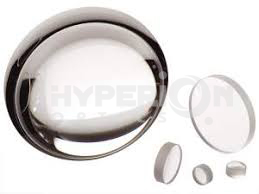Monitoring camera infrared light refers to invisible light with a wavelength greater than 750nm. Any object in nature emits infrared radiation, and by using this property, people can see many things in nature that are not visible to the naked eye. In fact, infrared technology is widely used in various fields such as security monitoring, medical equipment, automotive night vision, communication surveillance, and consumer electronics. In the surveillance industry, cameras with infrared function have become a trend, and as the front-end device of surveillance, the infrared effect of the lens plays a crucial role.
Infrared light has a different wavelength than visible light, and the focal points of the two light rays after passing through the lens are also different, resulting in different stereoscopic images. For ordinary lenses, if they have not been specially corrected, the image will become blurred in the morning after focusing clearly in the daytime. However, after being corrected, infrared lenses can produce clear images in both daytime and morning.
The most common application of infrared lenses is to complete 24/7 monitoring. After optical correction, the infrared lens usually needs to be refocused in the morning for clear imaging. However, infrared lenses that have been specially corrected with certain materials can make visible light and infrared light focus on the same point. Therefore, after focusing clearly in the daytime, opening the infrared illumination at night can still produce clear images.
Fog penetration arises from the monitoring needs in long-distance and complex environments. Fog is composed of large particles floating in the air, and the more particles per unit volume, the denser the fog. Visible light has a shorter wavelength and cannot penetrate thin fog, which is why visibility on foggy mornings is very low. Infrared light has a longer wavelength, which makes it possible for it to diffract around large particles and achieve fog penetration. Under fog penetration, the filter will filter out visible light and only save infrared light. With the coating technology for enhancing transmittance, the fog-penetrating infrared lens can achieve long-distance 24/7 monitoring even under extremely low visibility conditions, and maintains the focus plane without deviation in both normal and fog penetration modes.
Laser is highly concentrated monochromatic light, and therefore the use of infrared laser can achieve long-distance night vision monitoring. The laser beam scans the object, and the object reflects the beam back, which can be imaged after being focused by the lens. Usually, infrared lasers are used, and infrared lenses need to be used in conjunction with laser equipment. Infrared lenses that have been specially corrected with certain materials can penetrate 950nm light source and, when used in conjunction with infrared laser devices, can achieve super long-distance night vision monitoring.

 Call us on:
Call us on:  Email us:
Email us:  R&D Center: Aoti Street #68 Building 4A 405 International R&D park, Nanjing
R&D Center: Aoti Street #68 Building 4A 405 International R&D park, Nanjing









 English
English  cn
cn  de
de  es
es  fr
fr 


